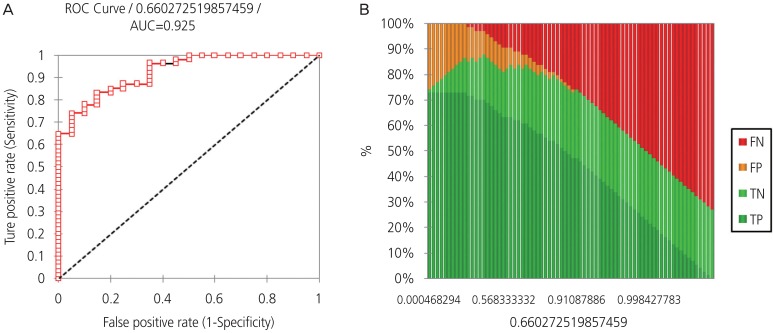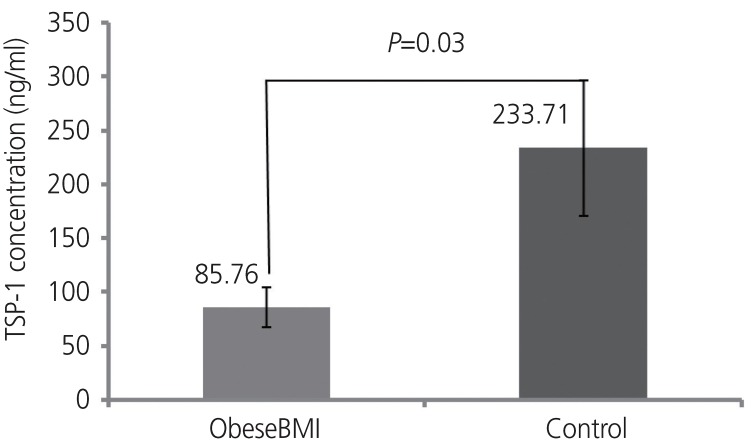1. Qu J, Che Y, Xu P, Xia Y, Wu X, Wang Y. The higher response of vascular endothelial growth factor and angiotensin-ii to human chorionic gonadotropin in women with polycystic ovary syndrome. Int J Fertil Steril 2015;8:373-378. PMID:
25780518.


2. Peitsidis P, Agrawal R. Role of vascular endothelial growth factor in women with PCO and PCOS: a systematic review. Reprod Biomed Online 2010;20:444-452. PMID:
20156703.


3. Diamanti-Kandarakis E. Role of obesity and adiposity in polycystic ovary syndrome. Int J Obes 2007;31(Suppl 2):S8-S13.

4. Jin CH, Yuk JS, Choi KM, Yi KW, Kim T, Hur JY, et al. Body fat distribution and its associated factors in Korean women with polycystic ovary syndrome. J Obstet Gynaecol Res 2015;41:1577-1583. PMID:
26257142.


5. El Hayek S, Bitar L, Hamdar LH, Mirza FG, Daoud G. Poly cystic ovarian syndrome: an updated overview. Front Physiol 2016;7:124PMID:
27092084.



6. Wang R, Mol BW. The Rotterdam criteria for polycystic ovary syndrome: evidence-based criteria? Hum Reprod 2017;32:261-264. PMID:
28119448.


7. Bani Mohammad M, Majdi Seghinsara A. Polycystic ovary syndrome (PCOS), diagnostic criteria, and AMH. Asian Pac J Cancer Prev 2017;18:17-21. PMID:
28240001.


8. Osz K, Ross M, Petrik J. The thrombospondin-1 receptor CD36 is an important mediator of ovarian angiogenesis and folliculogenesis. Reprod Biol Endocrinol 2014;12:21PMID:
24628875.



9. Geva E, Jaffe RB. Role of vascular endothelial growth factor in ovarian physiology and pathology. Fertil Steril 2000;74:429-438. PMID:
10973633.


10. Holmes DI, Zachary I. The vascular endothelial growth factor (VEGF) family: angiogenic factors in health and disease. Genome Biol 2005;6:209PMID:
15693956.



11. Greenaway J, Connor K, Pedersen HG, Coomber BL, LaMarre J, Petrik J. Vascular endothelial growth factor and its receptor, Flk-1/KDR, are cytoprotective in the extravascular compartment of the ovarian follicle. Endocrinology 2004;145:2896-2905. PMID:
14988387.


12. Ferrara N. The role of VEGF in the regulation of physiological and pathological angiogenesis. EXS 2005;(94):209-231. PMID:
15617481.


13. Loebig M, Klement J, Schmoller A, Betz S, Heuck N, Schweiger U, et al. Evidence for a relationship between VEGF and BMI independent of insulin sensitivity by glucose clamp procedure in a homogenous group healthy young men. PLoS One 2010;5:e12610. PMID:
20830305.



14. Lawler J, Detmar M. Tumor progression: the effects of thrombospondin-1 and -2. Int J Biochem Cell Biol 2004;36:1038-1045. PMID:
15094119.


15. Varma V, Yao-Borengasser A, Bodles AM, Rasouli N, Phanavanh B, Nolen GT, et al. Thrombospondin-1 is an adipokine associated with obesity, adipose inflammation, and insulin resistance. Diabetes 2008;57:432-439. PMID:
18057090.


16. Tan BK, Adya R, Chen J, Farhatullah S, Heutling D, Mitchell D, et al. Metformin decreases angiogenesis via NF-kappaB and Erk1/2/Erk5 pathways by increasing the antiangiogenic thrombospondin-1. Cardiovasc Res 2009;83:566-574. PMID:
19414528.


17. Maxel T, Svendsen PF, Smidt K, Lauridsen JK, Brock B, Pedersen SB, et al. Expression patterns and correlations with metabolic markers of zinc transporters
ZIP14 and
ZNT1 in obesity and polycystic ovary syndrome. Front Endocrinol (Lausanne) 2017;8:38PMID:
28303117.



18. Sanchez N. A life course perspective on polycystic ovary syndrome. Int J Womens Health 2014;6:115-122. PMID:
24489477.



19. F. BCJM. Revised 2003 consensus on diagnostic criteria and long-term health risks related to polycystic ovary syndrome: Rotterdam ESHRE/ASRM-Sponsored 3rd PCOS Consensus Workshop Group. Fertil Steril 2004;81:19-25.
20. Souza Dos Santos AC, Soares NP, Costa EC, de S├Ī JC, Azevedo GD, Lemos TM. The impact of body mass on inflammatory markers and insulin resistance in polycystic ovary syndrome. Gynecol Endocrinol 2015;31:225-228. PMID:
25373529.


21. Kahn HS. The ŌĆ£lipid accumulation productŌĆØ performs better than the body mass index for recognizing cardiovascular risk: a population-based comparison. BMC Cardiovasc Disord 2005;5:26PMID:
16150143.



22. Wiltgen D, Benedetto IG, Mastella LS, Spritzer PM. Lipid accumulation product index: a reliable marker of cardiovascular risk in polycystic ovary syndrome. Hum Reprod 2009;24:1726-1731. PMID:
19329517.


23. Duleba AJ, Dokras A. Is PCOS an inflammatory process? Fertil Steril 2012;97:7-12. PMID:
22192135.



24. Harada M, Peegel H, Menon KM. Expression of vascular endothelial growth factor A during ligand-induced down-regulation of luteinizing hormone receptor in the ovary. Mol Cell Endocrinol 2010;328:28-33. PMID:
20619315.



25. Bhattacharyya S, Marinic TE, Krukovets I, Hoppe G, Stenina OI. Cell type-specific post-transcriptional regulation of production of the potent antiangiogenic and proatherogenic protein thrombospondin-1 by high glucose. J Biol Chem 2008;283:5699-5707. PMID:
18096704.


26. Tada H, Kuboki K, Nomura K, Inokuchi T. High glucose levels enhance TGF-beta1-thrombospondin-1 pathway in cultured human mesangial cells via mechanisms dependent on glucose-induced PKC activation. J Diabetes Complications 2001;15:193-197. PMID:
11457671.


27. Ebrahimi-Mamaghani M, Saghafi-Asl M, Pirouzpanah S, Aliasgharzadeh A, Aliashrafi S, Rezayi N, et al. Association of insulin resistance with lipid profile, metabolic syndrome, and hormonal aberrations in overweight or obese women with polycystic ovary syndrome. J Health Popul Nutr 2015;33:157-167. PMID:
25995732.


28. Tahergorabi Z, Khazaei M. The relationship between inflammatory markers, angiogenesis, and obesity. ARYA Atheroscler 2013;9:247-253. PMID:
23970920.


29. Goossens GH, Blaak EE. Adipose tissue oxygen tension: implications for chronic metabolic and inflammatory diseases. Curr Opin Clin Nutr Metab Care 2012;15:539-546. PMID:
23037900.


30. Sun K, Halberg N, Khan M, Magalang UJ, Scherer PE. Selective inhibition of hypoxia-inducible factor 1╬▒ ameliorates adipose tissue dysfunction. Mol Cell Biol 2013;33:904-917. PMID:
23249949.



31. Elias I, Franckhauser S, Ferr├® T, Vil├Ā L, Tafuro S, Mu├▒oz S, et al. Adipose tissue overexpression of vascular endothelial growth factor protects against diet-induced obesity and insulin resistance. Diabetes 2012;61:1801-1813. PMID:
22522611.



32. Br├źkenhielm E, Veitonm├żki N, Cao R, Kihara S, Matsuzawa Y, Zhivotovsky B, et al. Adiponectin-induced antiangiogenesis and antitumor activity involve caspase-mediated endothelial cell apoptosis. Proc Natl Acad Sci U S A 2004;101:2476-2481. PMID:
14983034.





























